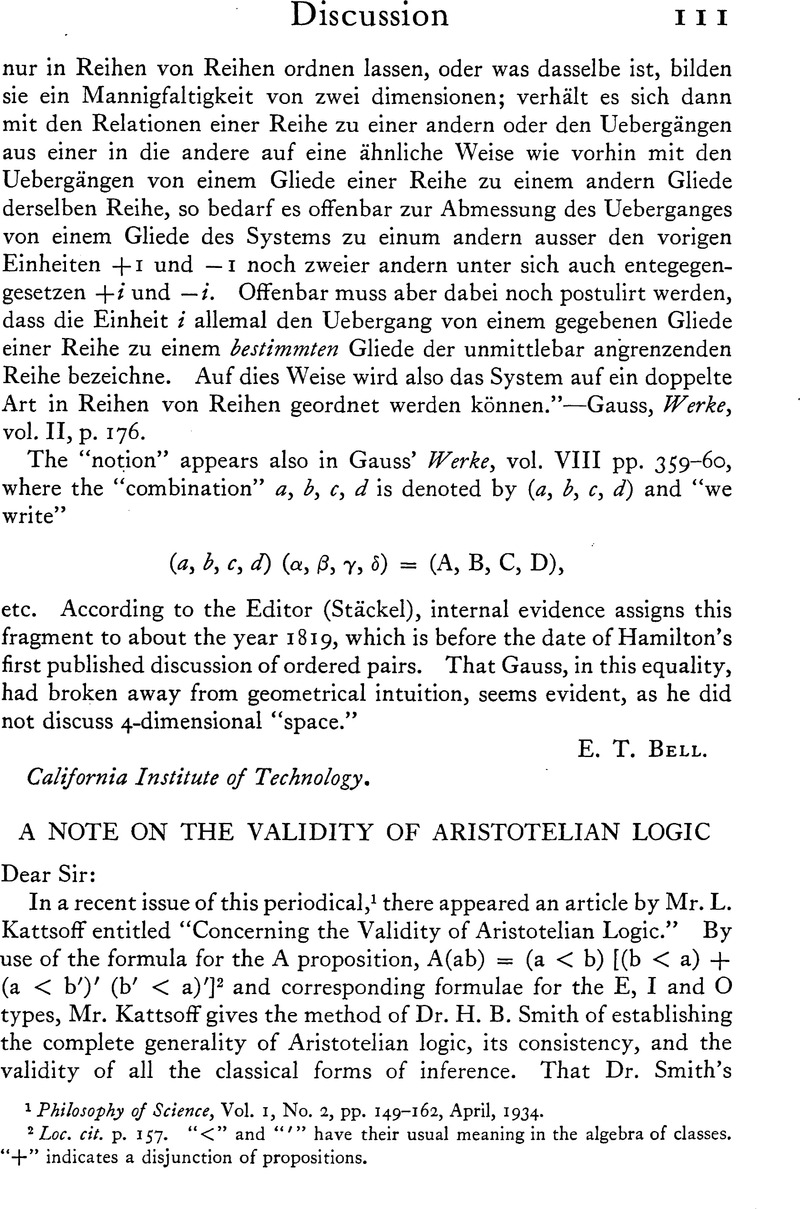Article contents
A Note on the Validity of Aristotelian Logic
Published online by Cambridge University Press: 14 March 2022
Abstract

- Type
- Discussion (Correspondence)
- Information
- Copyright
- Copyright © The Philosophy of Science Association 1935
References
1 Philosophy of Science, Vol. 1, No. 2, pp. 149–162, April, 1934.
2 Loc. cit. p. 157. “<” and “′” have their usual meaning in the algebra of classes. “+” indicates a disjunction of propositions.
3 Some writers restrict the law to a relation between two contradictory propositions. Cf. Keynes, Formal Logic, 4th ed. p. 454. Sigwart, Logic. Translation by Dendy, Vol. I, p. 139. Most writers, however, admit some statement closely approximating the above as at least one if not the only formulation of the law. Cf. Bain, Logic, Vol. I, p. 16. Joseph, Introduction to Logic, 2nd ed. p. 16. Eaton, General Logic, p. 423. Stebbing, Modern Introduction to Logic, p. 469. In any case no writer would challenge the principle as stated above and it is definitely Aristotelian. Cf. Aristotle Metaphysica 1006 a-7.
4 Since the class of entities is the universe class, the class of things which are both red and non-red, the null class; and E(1, 0) is true. See the tables given on p. 160, Loc. cit.
5 According to the formulation given, E(ab) is false when b = 0 and a ≠ 1. Loc. cit. p. 160.
6 Assuming the traditional analysis of the singular proposition as a universal. If the singular be considered a particular, both the above propositions are true.
- 1
- Cited by




